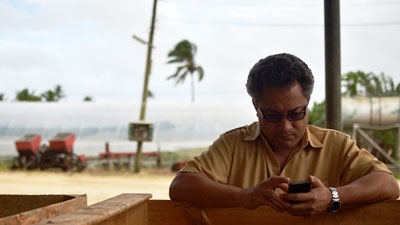Information and communication technology outreach is happening fast in one of the most dispersed regions on Earth, the Pacific. It’s a region comprised of some 9,000 islands spread across a vast ocean, where governments and businesses deal with some of the highest transaction costs in the world.
Two million more people in the Pacific gained access to mobile phones
Over the last six years, more than two million people in Papua New Guinea and the Pacific Islands gained access to mobile phones. In countries like Vanuatu, eight in ten people now have a mobile phone connection (a 70 percent increase from 2007), and call prices have dropped.
Villagers who for years had made treacherous three-hour long boat trips to make a simple phone call to the capital, are now calling and texting family in other provinces and other countries. Access to mobile phones has reduced isolation, made it easier and cheaper to do business, and increased government options for service delivery.
The benefits have been felt right across Papua New Guinea, Samoa, Solomon Islands, Tonga, and Vanuatu, and are now stretching into the North Pacific. This ‘telecommunications revolution’ is also creating jobs where they are needed most: directly creating livelihoods for at least 30,000 people in Papua New Guinea alone.
High-speed broadband next step in the Pacific
Mobile phones are just the beginning. High-speed broadband is the next step to help overcome these challenges. Most Pacific Island countries still depend on costly satellite links with limited bandwidth, and internet connectivity costs are among the highest in the world.
A 256kbps broadband internet connection costs US$650 per month in Palau. In Kiribati, one of the poorest countries in the region, it would cost $430. Such high rates are common across the Pacific. As a result, less than one percent of the region’s population typically has access to a reliable internet connection. Outside the main towns, people are still more likely to communicate with letters transported by ship than an email.
Where the internet exists it’s often painfully slow. Kelela Pasina runs an internet café just outside of Nuku’alofa, the capital of Tonga, but there are major bandwidth constraints. “The internet here is so bad. Sometimes it comes on and off and on and off again. It’s very bad for business and for my family.”
Like many Tongans, he has family overseas but he says, he can only contact them on Sundays when less people are using the internet. It will take him half an hour to upload a single photo of his new baby to send to his sister in Hawaii.

